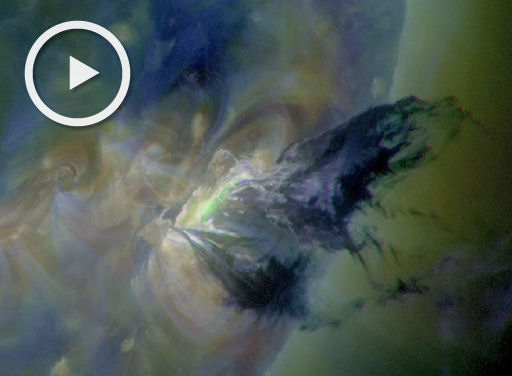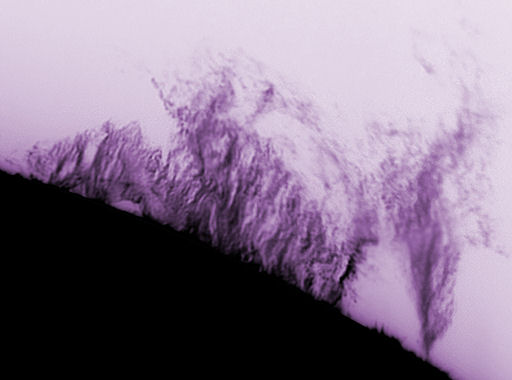They came from outer space--and you can have one! Genuine meteorites are now on sale in the Space Weather Store. | | |
A METEOR SHOWER IN BROAD DAYLIGHT: The annual Arietid meteor shower peaks this week on June 7th and 8th. The Arietids are unusual because they are daytime meteors; the shower is most intense after sunrise. People who wake up early might notice a small number of Arietids during the dark hours before dawn. The real action, however, occurs in broad daylight. Tune into the meteor radar for echoes.
M-FLARE AND RADIATION STORM: This morning around 0641 UT, magnetic fields above sunspot complex 1226-1227 became unstable and erupted. The blast produced an M2-class solar flare, an S1-class radiation storm, and a massive CME. A recording of the blast from NASA's Solar Dynamics Observatory ranks as one of the most beautiful and dramatic movies of the SDO era:

more movies: YouTube; 5 MB mpeg; 2 MB Quicktime
A video with commentary from solar physicist C. Alex Young of NASA's Goddard Space Flight Center shows material splashing back to the stellar surface. "I've never seen material released this way before," he says in the video. "It looks like someone kicked a clod of dirt in the air--an amazing, amazing event."
Coronagraphs onboard the Solar and Heliospheric Observatory (SOHO) are still monitoring the CME as it billows away from the sun. Watch the cloud expand. The speckles are caused by energetic charged particles hitting the camera's CCD array. This is what we mean by a "radiation storm"; the particles were accelerated by the explosion and are now peppering Earth-orbiting satellites and spacecraft like SOHO.
Although the blast was not squarely Earth-directed, it will affect our planet. The CME should deliver a glancing blow to Earth's magnetic field during the late hours of June 8th or June 9th. High-latitude sky watchers should be alert for auroras when the CME arrives.
June 2011 Aurora Gallery
[Aurora alerts: text, voice] [previous Junes: 2010, 2008, 2001]
HAIR-RAISING SOLAR ACTIVITY: Over the past few days, amateur astronomers have recorded some of the most photogenic solar activity in years. Onlookers describe huge prominences of magnetized plasma rising above the stellar surface as "Unbelievable!"--"Hydrogen at its best"--"Massive and incredible!" This shot was simply hair-raising:

Alan Friedman took the picture from his backyard observatory in Buffalo, New York, on June 5th. "There are more to come," he promises. And why not? The show is still underway. Latest images from NASA's Solar Dynamics Observatory reveal at least three regions of continued activity. Readers with solar telescopes are encouraged to train their optics on the limb of the sun.
more photos: from Andreas v. Rétyi of Coburg, Bavaria, Germany; from Jim Fakatselis of Peppermill Skies Observatory Huntington, NY; from Michael O'Connell of Kildare, Ireland; from Sean Walker of Manchester, NH; from Erika Rix of Zanesville, OH; from Mike O'Connor of Orchard Park, New York; from John Stetson of Falmouth, Maine;
Midnight Solar Eclipse Gallery
[NASA: A Rare Eclipse of the Midnight Sun]

